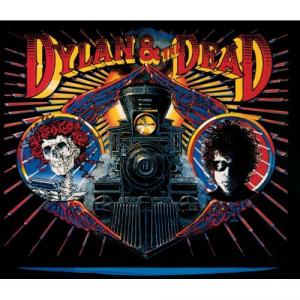
Dylan and The Dead (1988)

1. Slow Train
2. I Want You
3. Gotta Serve Somebody
4. Queen Jane Approximately
5. Joey
6. All Along the Watchtower
7. Knockin' on Heaven's Door
By 1988, collaborative live albums were hardly a novelty, but Dylan & the Dead promised a union of two titanic forces in American music: Bob Dylan, the mythic bard of the counterculture, and the Grateful Dead, those perennial psychedelic journeymen whose improvisational ethos had long defined the live experience. On paper, the collaboration was electrifying. In practice, it yielded an album that is curiously underwhelming—more notable for its missed potential than for any singular musical achievement.
One might have expected the Grateful Dead’s freewheeling sensibility to infuse Dylan’s material with new textures, perhaps revivifying older compositions or uncovering new interpretive layers. Instead, what emerges is a series of performances that feel alarmingly disengaged. The opening track, Slow Train, sets the tone with a perfunctory run-through that begins mid-motion, as though the listener has stumbled into a rehearsal rather than a concert. The arrangement is competent but listless; the energy rarely lifts above the merely serviceable.
Dylan himself seems oddly muted throughout. While he has long embraced live reinterpretation—often to the frustration or delight of his audiences—here his vocals lack both nuance and fire. There is little of the surreal phrasing or dynamic unpredictability that characterizes his best live work. The Dead, for their part, sound deferential to a fault. Rather than pushing Dylan into new terrain, they seem content to accompany him politely, their famed improvisational daring scarcely in evidence. Only on I Want You does a hint of their identity seep through, and even then, it feels more like a trace element than a guiding force.
The tracklist is limited—just seven songs—though the performances are often elongated. Yet length does not translate into depth. The extended jams lack direction, and the setlist omits any fresh or unexpected selections that might have justified the exercise. The album, for all its promise, plays like a footnote: neither an essential entry in Dylan’s catalogue nor a meaningful expansion of the Dead’s repertoire.
Perhaps the disappointment lies in expectations. With such formidable legacies behind them, one hoped for a synthesis that would transcend both. Instead, Dylan & the Dead settles for a curiously mechanical rendering of familiar material, devoid of the spontaneity or spirit that defined either artist at their best.
It is not a catastrophe—merely a missed opportunity. And in the careers of artists so defined by reinvention, perhaps that is the greater disappointment.
Go back to the main page
Go To Next Review